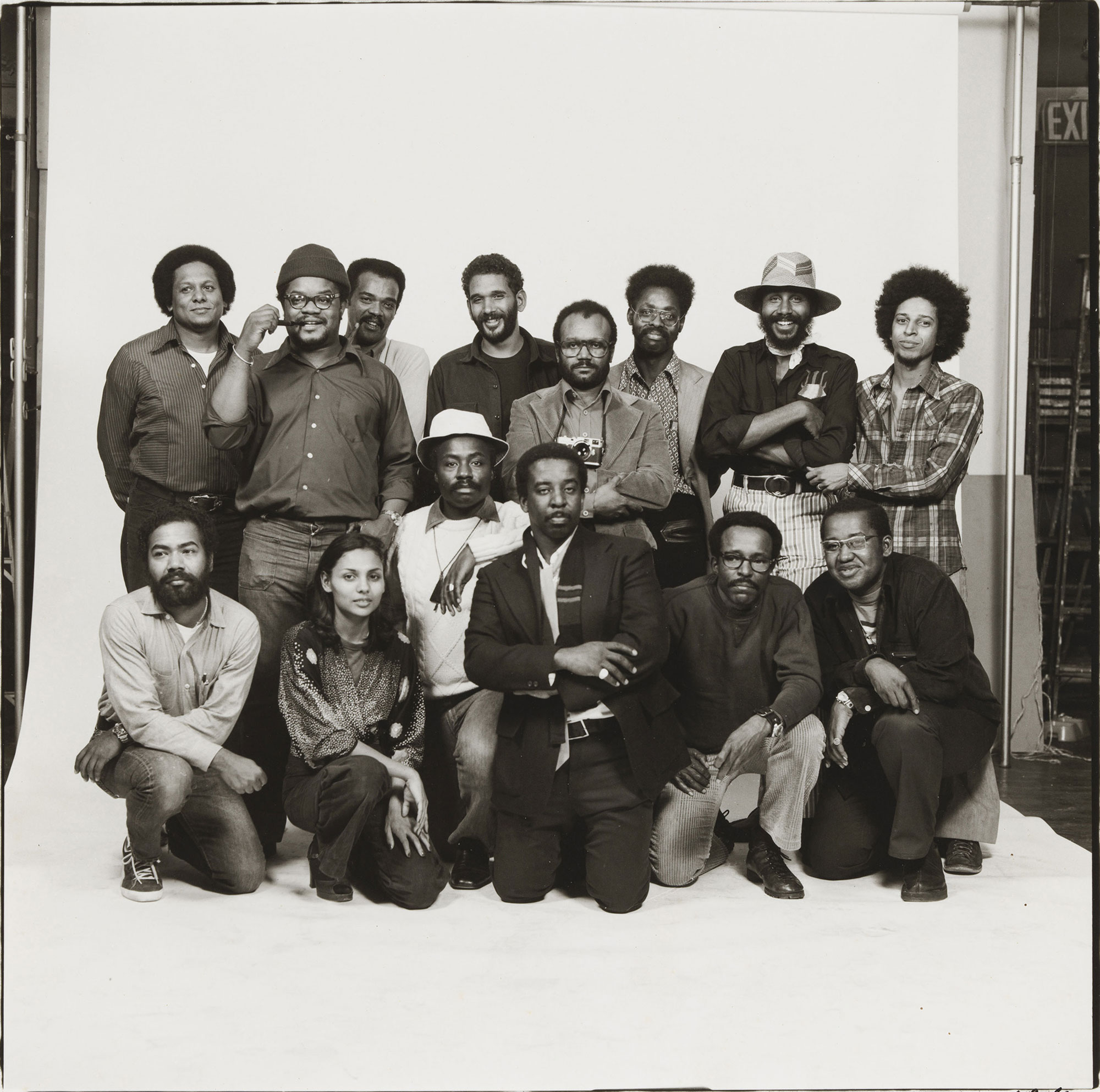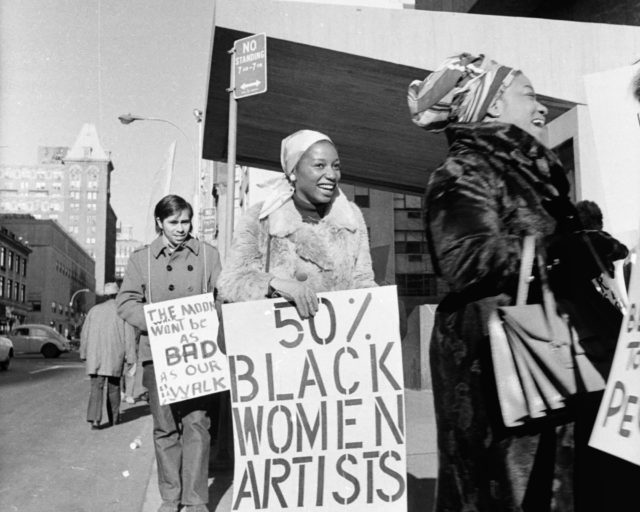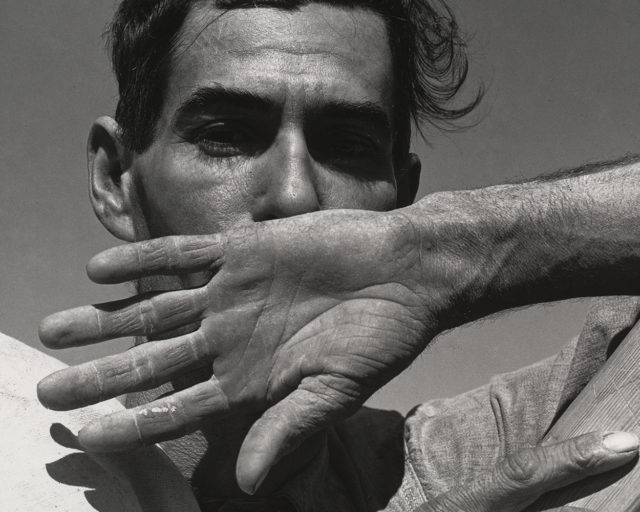Anthony Barboza, Kamoinge Members, 1973
© the artist and courtesy the Whitney Museum of American Art, New York
In 2016, on the occasion of an exhibition of the photographs of Louis Draper at Steven Kasher Gallery, Hyperallergic critic John Yau asked, “Does the Museum of Modern Art Even Know about This Great Photographer?” Apparently, they didn’t. Although Draper, who had died in 2002, was a prominent Black photographer and one-time president of the Kamoinge Workshop, there was little evidence that New York’s august Museum of Modern Art (MoMA) had paid much attention. MoMA’s communications director tersely informed Yau that the museum did, indeed, own photographs by Draper and other members of the Kamoinge Workshop. But they had been consigned to what was unceremoniously called the “study collection”—work deemed “not appropriate for acquisition to the Collection.”
Much has changed since that time five years ago. But much has not.
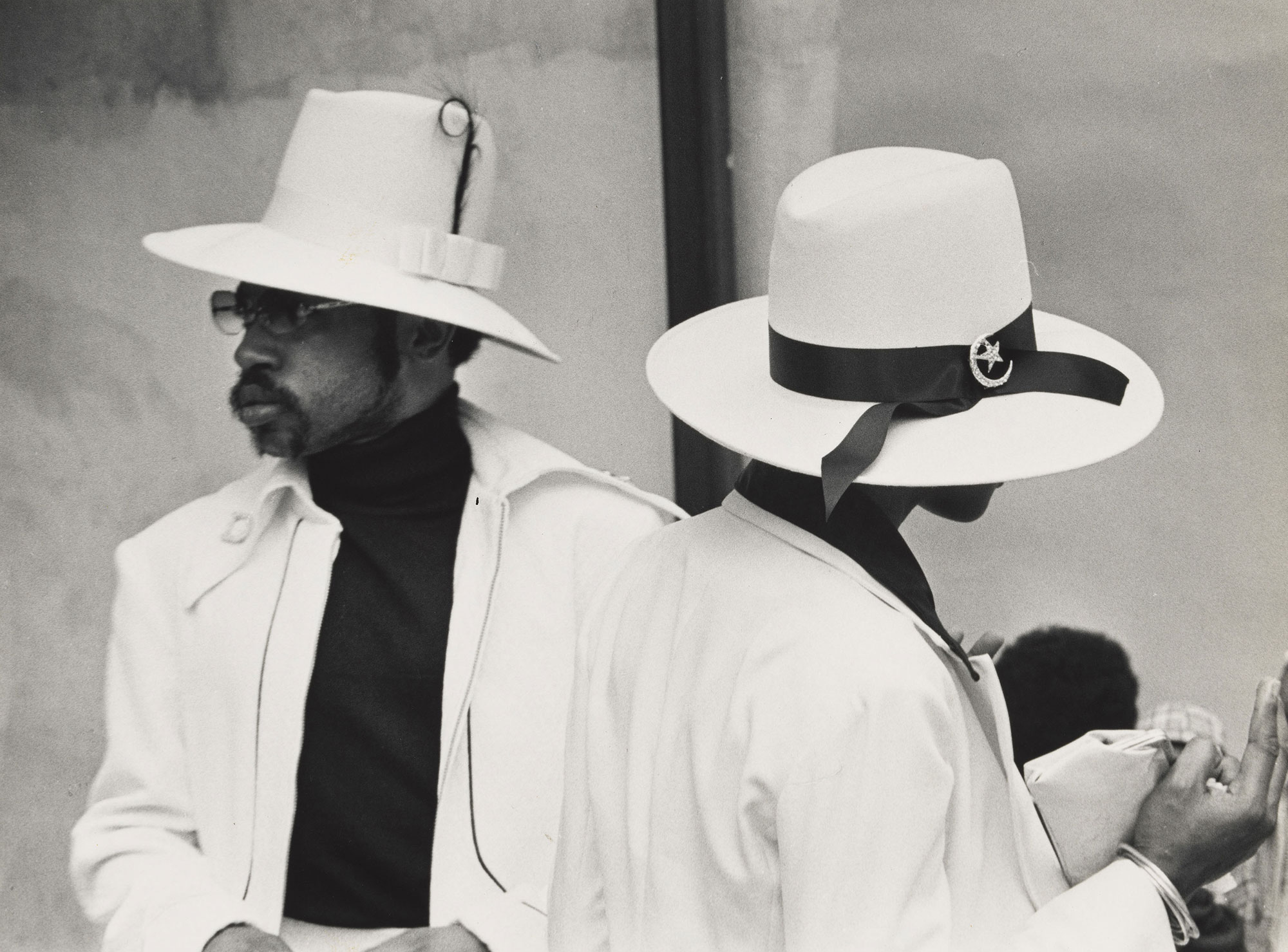
© the artist and courtesy the Whitney Museum of American Art, New York
Going to see the exhibition Working Together: The Photographers of the Kamoinge Workshop at the Whitney Museum of American Art, I was reminded once again of the segregated histories of American cultural institutions, and of the ongoing struggle by people of color and other marginalized communities to achieve visibility and social justice. In recent years, museums have become battlegrounds over political representation and cultural narratives, and none more so than the Whitney. In 2017, Black artists protested the museum’s insensitive display of a white artist’s painting of the slain Emmett Till at the Whitney Biennial. Then, beginning in 2018, Decolonize This Place and other activist artists staged demonstrations at the museum over the continued presence on the Whitney’s board of directors of Warren B. Kanders, owner of Safariland, a munitions firm that manufactures body armor for police and tear gas used against migrants and protesters. (Kanders has since resigned from the Whitney’s board.) In the last year, amid massive national protests organized by individuals and groups like Black Lives Matter over the police murders of George Floyd, Breonna Taylor, and others, the Whitney announced an exhibition titled Collective Actions: Artist Interventions in a Time of Change, which would have included works by Black photographers and activist artists. Unfortunately, the Whitney was forced to cancel the exhibition when it was revealed that the museum had scooped up the donated works cheaply at fundraising benefits.

© the artist and courtesy the Virginia Museum of Fine Arts
Given this heated context, it is easy to understand why all-too-white art museums are suddenly scrambling to stage exhibitions by Black artists. Still, whatever the backpedaling cause, it is a revelatory thrill to see a full-scale museum presentation of work by artists associated with the rarely exhibited Kamoinge Workshop, an extraordinary collective of Black New York photographers started in 1963 as an active part of the Civil Right struggle and the emerging Black Arts Movement. The 140 black-and-white photographs shown in Working Together at the Whitney feature a muted, slow-burn politics. The small pictures are quiet, almost meditative, and they deliberately sidestep the confrontational images often associated with Black struggles for political and psychic freedoms. Instead, these various images, by a range of photographers with individual differences in style and approach, focus on one thing: capturing affirmative representations of African American people in all aspects of daily life.
Organized by Dr. Sarah Eckhardt of the Virginia Museum of Fine Arts, Richmond, following that museum’s acquisition of the Louis Draper archive, this meticulously researched exhibition examines the ideas and visual themes of the long-running Kamoinge Workshop, a group of photographers who have been largely overlooked by museums until recently but are absolutely crucial to understanding postwar American photography. Working Together highlights the fourteen members of Kamoinge who formed the nucleus of the group between 1963 and 1980: Anthony Barboza, Adger Cowans, Daniel Dawson, Louis Draper, Albert Fennar, Ray Francis, Herman Howard, James Mannas, Herbert Randall, Herb Robinson, Beuford Smith, Ming Smith, Shawn Walker, and Calvin Wilson. (These fourteen photographers are shown in a wonderful group portrait made by Barboza in 1973—enlarged to mural size at the entrance to the exhibition—and in a mesmerizing series of filmed interviews recorded last year and viewable at the exhibition or online).
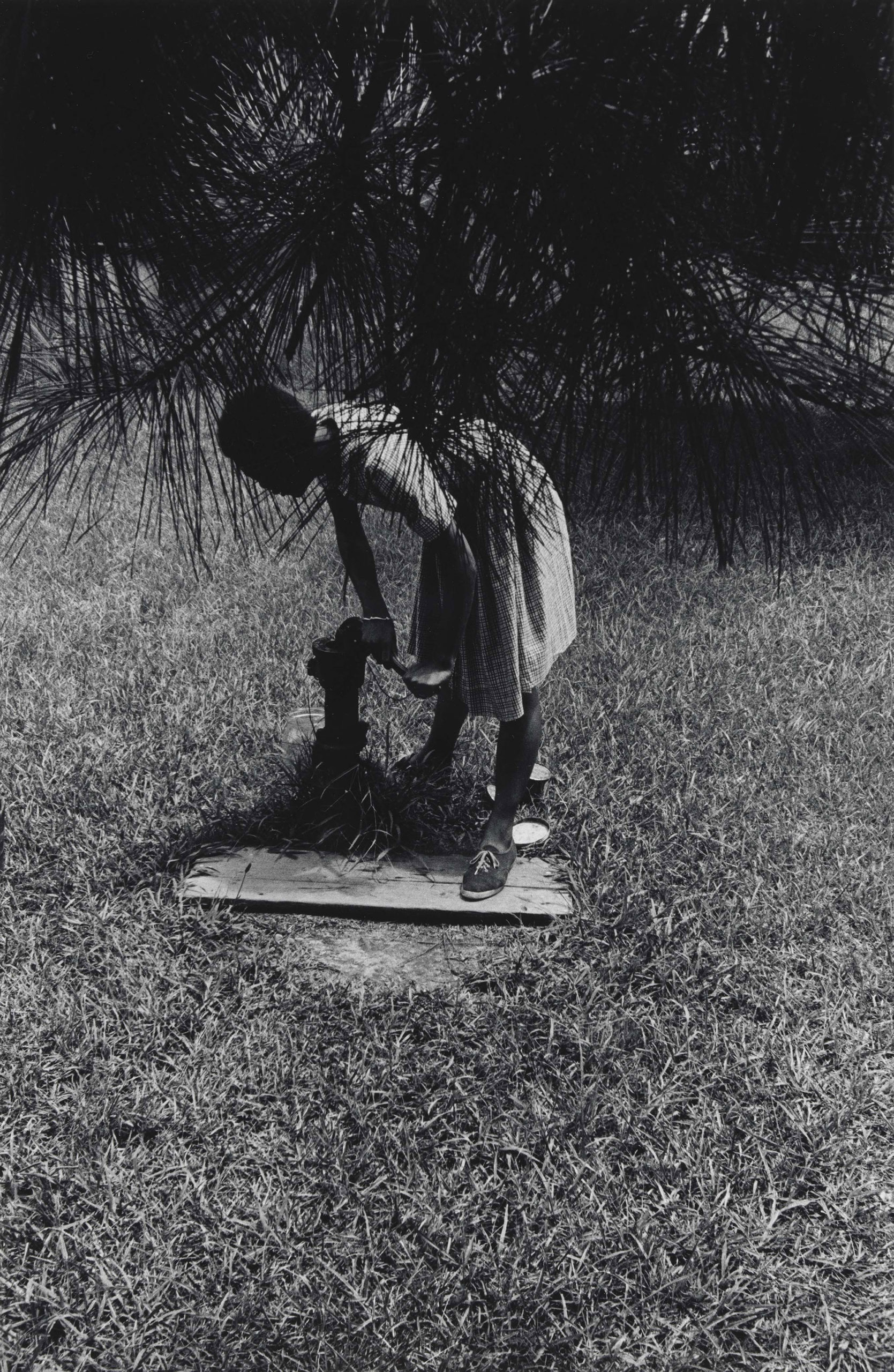
© the artist and courtesy the Whitney Museum of American Art, New York
The Kamoinge Workshop was founded in 1963 by Roy DeCarava, one of the most prominent Black American photographers at the time. He had won a Guggenheim Fellowship in 1952, collaborated with poet Langston Hughes on the much-acclaimed book The Sweet Flypaper of Life in 1955, and was included in the landmark 1955 MoMA exhibition The Family of Man. But he was also not afraid to object to what he regarded as art-world racism. In 1971, DeCarava was one of fifteen artists who boycotted the Whitney show Contemporary Black Artists in America, a substantial national survey exhibition planned to respond to protests against the museum’s biases and to highlight the exemplary achievements of Black artists. He later told the New York Times, “One of the things that got to me was that I felt that black people were not being portrayed in a serious and in an artistic way.”
“One of the things that got to me was that I felt that black people were not being portrayed in a serious and in an artistic way.”
DeCarava was a generation older than most of the other Kamoinge photographers, and he only led the group briefly, but he was instrumental in forming the collective’s aesthetics and political ideals. As the handful of photographs by DeCarava in Working Together demonstrate, he was unparalleled in his ability to make dark, luminous prints and to draw serious attention to the most inauspicious moments of African American street life. DeCarava directly influenced Louis Draper’s subtle photographic approach—as did W. Eugene Smith, for whom Draper worked as an assistant. Adopting DeCarava’s and Smith’s intense blacks and rich shadows, Draper was able to create extraordinary portraits, such as his extreme close-up of political activist Fannie Lou Hamer in 1971. In Draper’s John Henry from the 1960s, a picture of a man confronting others on a stoop with his back to the camera becomes a powerful everyday drama delineated in black and gray tones.

Courtesy the Louis H. Draper Preservation Trust, Nell D. Winston, Trustee
Draper was also Kamoinge’s spiritual and philosophical leader. In a brief history of the group written in 1972, Draper included the famous credo, “We speak of our lives as only we can.” This Black collective drew from their own cultural histories and life experiences. The group name, Kamoinge, emphasized what Draper called the “emerging African consciousness exploding within us.” In the anti-colonialist writing of future Kenyan president Jomo Kenyatta, the photographers discovered the Gikuyu word kamoinge, defined as “a group of people acting together.” For the young artists, the word signaled their collective ambition and linked them to the global Pan-African movement, devoted to liberation struggles in colonized countries and to connecting widely dispersed communities of the Black diaspora. As many images in Working Together show, the ardently Pan-Africanist Kamoinge members traveled to newly liberated African countries, as well as to Guyana, Cuba, Jamaica, Suriname, and Brazil.
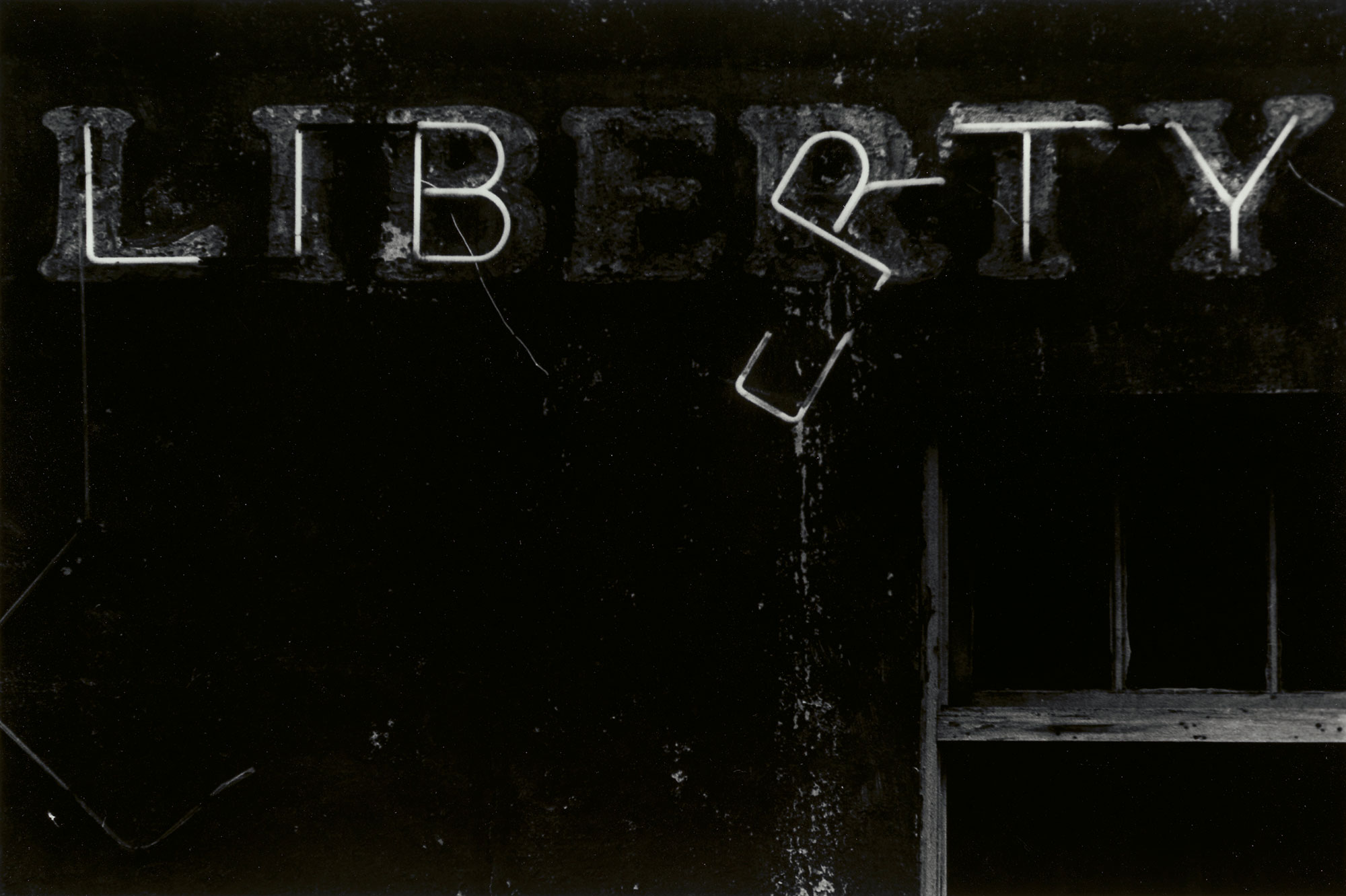
© the artist and courtesy the Virginia Museum of Fine Arts
At home, most of the Kamoinge members were active politically, as suggested by views of demonstrations and portraits of leaders like Malcolm X, Pork Chop Davis, and Martin Luther King Jr. Some images, like the many that show American flags, or Barboza’s “Liberty” sign in Pensacola, Florida (1966)—in which the neon word has a falling letter E and a skewed R—seem to reach for relevance. But most Kamoinge photographers fashioned a form of political coverage that differed from mainstream photojournalism: they avoided images of racist clashes and stereotypes of Black poverty, drugs, and violence. Typical is Herbert Randall, who bravely traveled to Hattiesburg, Mississippi, for Freedom Summer in 1964, a movement constantly threatened by vicious white mobs. “There will always be a need to document the struggle,” Randall says in the Whitney video. But, he adds, “Certain things I was going to do and certain things I wasn’t going to do. I wasn’t going to do dogs growling.” So, he took hundreds of images of Black folks just hanging out, and voter registration drives led by white college students. One image depicts a young Black kid in sneakers, idling on a wooden staircase, simply staring dreamily into the distance.

Courtesy the artist
What is striking visually in the exhibition is the variety of approaches among the various photographers as to style and subject matter. Although Kamoinge members met regularly and reviewed each other’s work, the group was more collective than collaborative; they were fourteen individuals, and there was no group style, no “Black aesthetic.” Some works are near-abstractions, while others exemplify social documentary realism; some use seriality and conceptualism; many explore new approaches to portraiture and street photography. If there is one common stylistic feature, it is this ability to eke out an image from an almost all-black setting. This is particularly clear in the group’s many portraits of great jazz musicians in their darkened haunts, including Herb Robinson’s nearly opaque 1961 shot of Miles Davis, his features reduced to a few slashes of light. Ming Smith, the only woman in the group and one of its most inventive artists, was married to jazz saxophonist David Murray, for whom she made record album cover art; she also made dramatic pictures of Sun Ra performances in 1978.
While seeking acceptance from white institutions like MoMA, the Kamoinge photographers deliberately set their own rules. In Working Together’s substantial exhibition catalogue, art historian John Edwin Mason argues that this separatist impulse echoed the Black nationalist call by Malcolm X and the Nation of Islam for African American people to “Do for Self.” This meant that as a minority within a white cultural sphere, Black people would have to establish their own institutions and artistic practices. Kamoinge industriously engaged in a wide range of outreach, distribution, and education as crucial aspects of their work to spotlight and encourage all Black photographers. They produced exhibitions, lectures, films, publications, and two portfolios of original prints (one was gifted to MoMA); much of this prodigious program is detailed through ephemera in Working Together’s display cases. Chief among these public efforts was the expansive Black Photographers Annual, a publication issued four times between 1973 and 1980 which focused on both contemporary and historic Black photographers. In 2017, Mason called it “a book that changed the history of photography in America.”
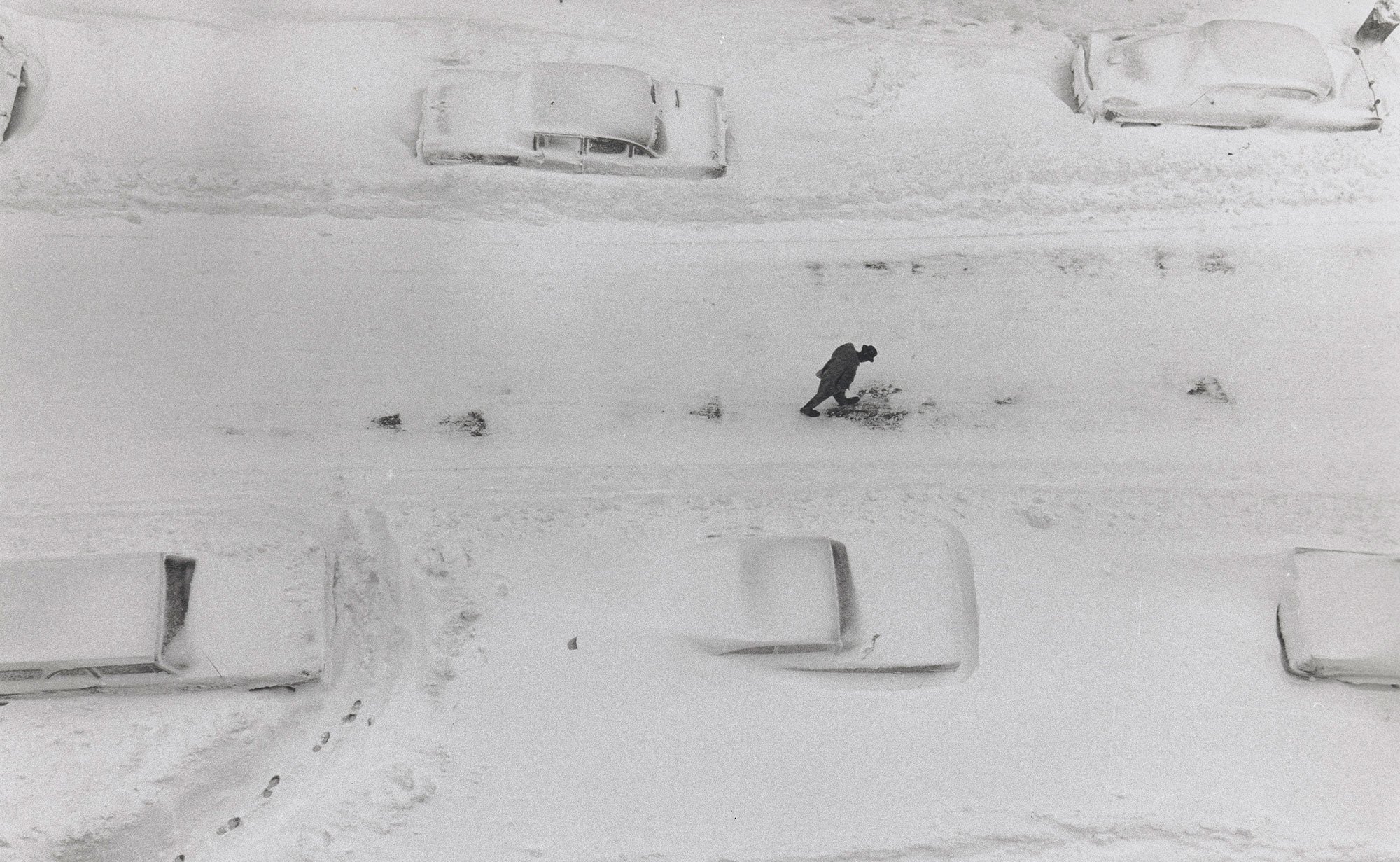
© the artist and courtesy the Virginia Museum of Fine Arts
But why did most museums fail to recognize or validate the efforts and achievements of the industrious Kamoinge Workshop? One thought is that, in judging these photographs, white curators and critics were wielding normative cultural values and aesthetic criteria that simply did not apply. What is significant about the Kamoinge photographers is that they don’t fit in the received models and storylines of museum-based art history. What the Kamoinge photographers were doing was a striking counterweight, not only to prevailing tenets of photojournalism, but also to the ironic street photography of Diane Arbus, Lee Friedlander, and Garry Winogrand that MoMA celebrated (and canonized) in the New Documents exhibition of 1967. And, as the recent Brooklyn Museum exhibitions We Wanted a Revolution: Black Radical Women, 1965–85 (2017) and Soul of a Nation: Art in the Age of Black Power (2019) have shown, there was a broad and complex movement by other Black artists at the time that was also largely ignored by white art institutions.
The Kamoinge Workshop photographs require a different way of looking, and adjusting any understanding of their meaning to consider their particular social context. As a group, these photographers created a visual and social model that was unique. Through their interests in alternative political and spiritual philosophies, their sensitivity to global artistic influences, their appreciation of the small moments of everyday life, and their willingness to explore different visual strategies to address political conditions, the photographers of Kamoinge forged a more nuanced and positive image of Black life, one that defied the conventions encouraged by mainstream publications and art museums. The works may appear more humanist than activist, but their point may be to dissolve that distinction. As Barboza told journalist Miss Rosen in 2020, “We were Black, photographing Black people and making statements about what goes on between society and Black people.”
Working Together: The Photographers of the Kamoinge Workshop is on view at the Whitney Museum of American Art, New York, through March 28, 2021. The exhibition will travel to the J. Paul Getty Museum, Los Angeles, and to the Cincinnati Art Museum.








